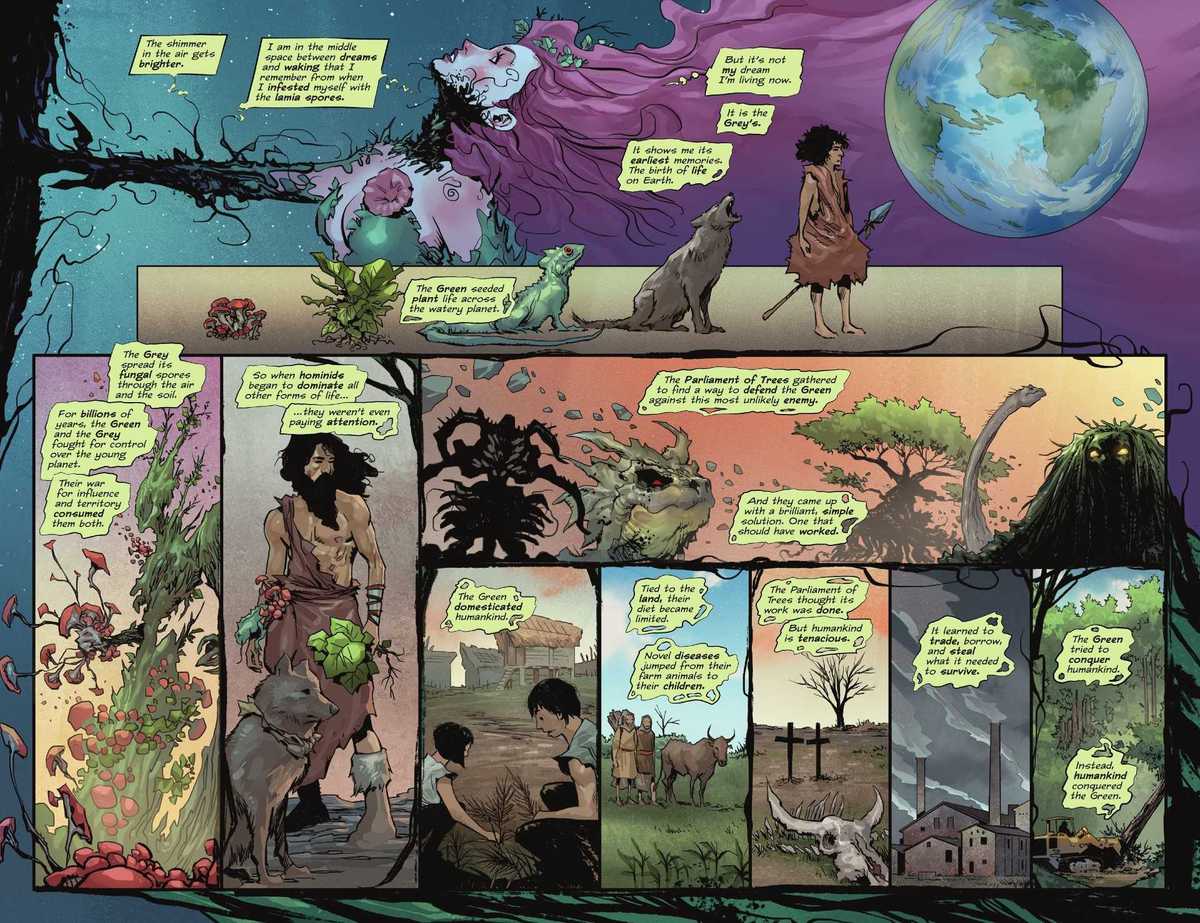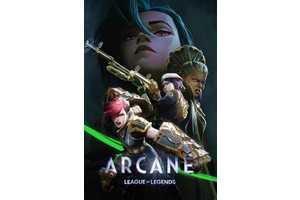Swamp Thing Just Got a Surprising Lore Makeover From an Unexpected DC Villain
Warning: contains spoilers for Poison Ivy #30!
Swamp Thing’s lore is ever-evolving, and it just received a shocking makeover from a surprising DC villain. Swamp Thing is the champion of the Green, a primal force binding all plant-life on Earth. There are other heroes and villains with powers similar to Swamp Thing, including Poison Ivy. In Poison Ivy #30, the titular character makes a stunning discovery about the Green, upending what fans thought they knew.
Poison Ivy #30 is written by G. Willow Wilson and drawn by Marcio Takara. Poison Ivy, trying to bring peace to the Green and the Grey, which represents fungi, delves into the history of the two groups. The war between them had been raging for years, but went in a new direction when humanity emerged. The Green rightfully saw the upstart humans as a threat, and responded by “domesticating” them. The Green “tied [humans] to the land,” but it worked a little too well: humanity in time came to dominate the Green–the exact opposite of what the Green intended.
Swamp Thing's DC History, Explained
DC Began Changing Swamp Thing's Lore From the Get-Go
Swamp Thing is a cult-favorite in the DC Universe, a spot he has occupied for over 50 years. Created by Len Wein and Berni Wrightson, Swamp Thing’s origin has changed since his first appearance in House of Secrets #92. As originally presented, Swamp Thing was once scientist Alec Holland, who was caught in a nasty chemical explosion. Doused in experimental substances, Holland dived into the waters of the swamp, where he was reborn as Swamp Thing. Swamp Thing then embarks on a quest to restore his humanity, and no longer be a “muck encrusted mockery of a man.”
Swamp Thing's primary villain is Anton Arcane and his Un-Men.
This journey to regain his lost humanity would propel Swamp Thing through his first decade in the DC Universe. After his debut, Swamp Thing was quickly spun off into his own title. The original Swamp Thing story had been set at an indeterminate period in history, but his new ongoing book was set firmly in the present day. While no explanation was given for this change, Alan Moore would seize upon it when he took over the writing reins of Swamp Thing, and use it to pick the character’s mythology apart. Swamp Thing’s original book would run for 24 issues.
Alan Moore Revolutionized Swamp Thing--And American Comics
Alan Moore Threw Out the Book on Swamp Thing, And Wrote a Better One
With nothing left to lose, Swamp Thing co-creator Len Wein, who was also the book’s editor, handed the character over to Alan Moore, who was then a virtual unknown to American comics readers.
Alan Moore’s arrival on Swamp Thing changed the character and his lore forever. Swamp Thing proved popular enough that, by 1982, he warranted his own live-action movie, directed by Wes Craven. DC thought it a good idea to have a new Swamp Thing monthly, but when the film flopped, the book’s sales went into a tailspin. With nothing left to lose, Swamp Thing co-creator Len Wein, who was also the book’s editor, handed the character over to Alan Moore, who was then a virtual unknown to American comics readers.
In his second issue, Alan Moore began reworking Swamp Thing and his origin. In the legendary story “The Anatomy Lesson,” Moore and his collaborators revealed Swamp Thing had never been a human–he only had Alec Holland’s memories. Furthermore, he was a powerful Earth elemental, and the champion of the Green. Moore introduced the Parliament of Trees, which consisted of former Swamp Things, as well as the trickster magician John Constantine, who would prove integral to Swamp Thing’s journey of self-discovery. It was the first substantial rewriting of Swamp Thing’s lore, and it worked beautifully.
Swamp Thing's Lore Continues to Grow and Expand
How Will Swamp Thing React to The New Revelation About the Green?
Swamp Thing has experienced other lore shifts since Moore’s departure from the book. Later creators revealed that Alec Holland knew Pamela Isley, the future Poison Ivy, when she was younger. Holland, his wife Linda and Pamela were all members of the same grad school cohort, and all had been students of Jason Woodrue, the future Floronic Man. Swamp Thing was also given a daughter, Tefe. Finally, the Swamp Thing fans who had known and loved for almost 50 years retired, and a new one, Levi Kamen, took up the mantle.
In addition to the Green and the Grey, there is also the Red, which unites all animal life.
While Swamp Thing’s mythos has changed over time, the true nature of the Green has not. In his final issue of Swamp Thing, Moore and his collaborators took readers on a guided tour of the Green’s history, beginning in prehistoric times. It revealed them to be largely non-confrontational. As new forms of life emerged on Earth, the Green was content to merely watch them. As the dinosaurs gave way to mammals, the Green continued to take a hands-off role in humanity, save using them as templates for their champions.
Yet what Poison Ivy sees runs counter to every other portrayal of the Green. In Poison Ivy #30, the Green is cast in a more sinister light: they saw humanity as a threat, one that needed to be dealt with. While the Green thought they were getting the better of humans, their pride and hubris blinded them to the fact that humanity had actually turned the tables. The issue recasts the relationship between humanity and the Green as more adversarial. What this means for Swamp Thing moving forward remains to be seen, but the Elemental is not likely to take it well.
Poison Ivy #30 is on sale now from DC Comics!









